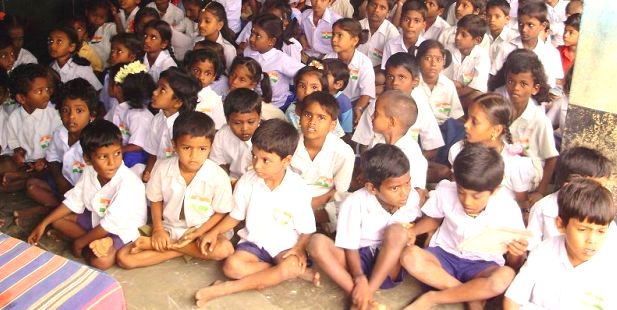UPA's Education Claims: Fact Check On Quality Check

Absolute numbers are good because they show where you stand when compared to a point in time earlier. But then, targets cannot always be absolute. Absolute numbers may look good in education but if you compare what India has achieved, in areas like higher education enrolment or literacy, to other developing countries, it's a long way to go. And that is not quite highlighted in the high decibel, state-sponsored pre-election advertising campaigns. In the run up to the general elections later this year, IndiaSpend is attempting to examine the achievements of the Congress-led United Progressive Alliance (UPA) Government, which has been in power at the Centre for 10 years. In an earlier report, we took stock of the stated achievements of the Government in the health sector. Now we put the spotlight on education indicators and achievements, as claimed by the Government, and try and place it in the global context. Literacy Rates Literacy increased from 52.2% in 1991 and touched 74% in 2011 under the UPA Government, according to Census data – which is collated once in 10 years. Female literacy increased more than the male literacy rate. However, female literacy is still a low 65.5% in 2011 while the male literacy rate was 82.1% in the same year.
Now, let us put this in the global context. Even though we are doing better than some of our neighbouring countries, we have the lowest literacy rates among BRICS nations. Russia has a literacy rate of 99.6%, which is the highest among the BRICS nations followed by China, Brazil and South America, according to UNDP. India is the worst among these nations with a literacy rate of 74%.
Enrolments Enrolment is another area that the UPA Government says there have been significant leaps. The Net Enrollment Ratio (NER) in primary education, according to the claim, has increased from 92.7% in 2006-07 to 98.3% in 2009-10.
Data from District Information System for Education (DISE), a Ministry of Education initiative to collate data on education across the country, corroborates the numbers. The NER for primary level has grown by five and a half percent between 2006-07 and 2009-10. In 2012-13, NER at primary level was 90.78. Further, DISE data also shows that transition rates from the primary level to the upper primary level is increasing every year and the average dropout rates is also reducing every year - both of which are positive signs for education in India. Experts say that the encouraging figures in enrolment in primary education are due to the successful running of schemes including The Right to Education (RTE) Act and the Mid-day Meal (MDM) scheme.
Advertisement
Next Story



